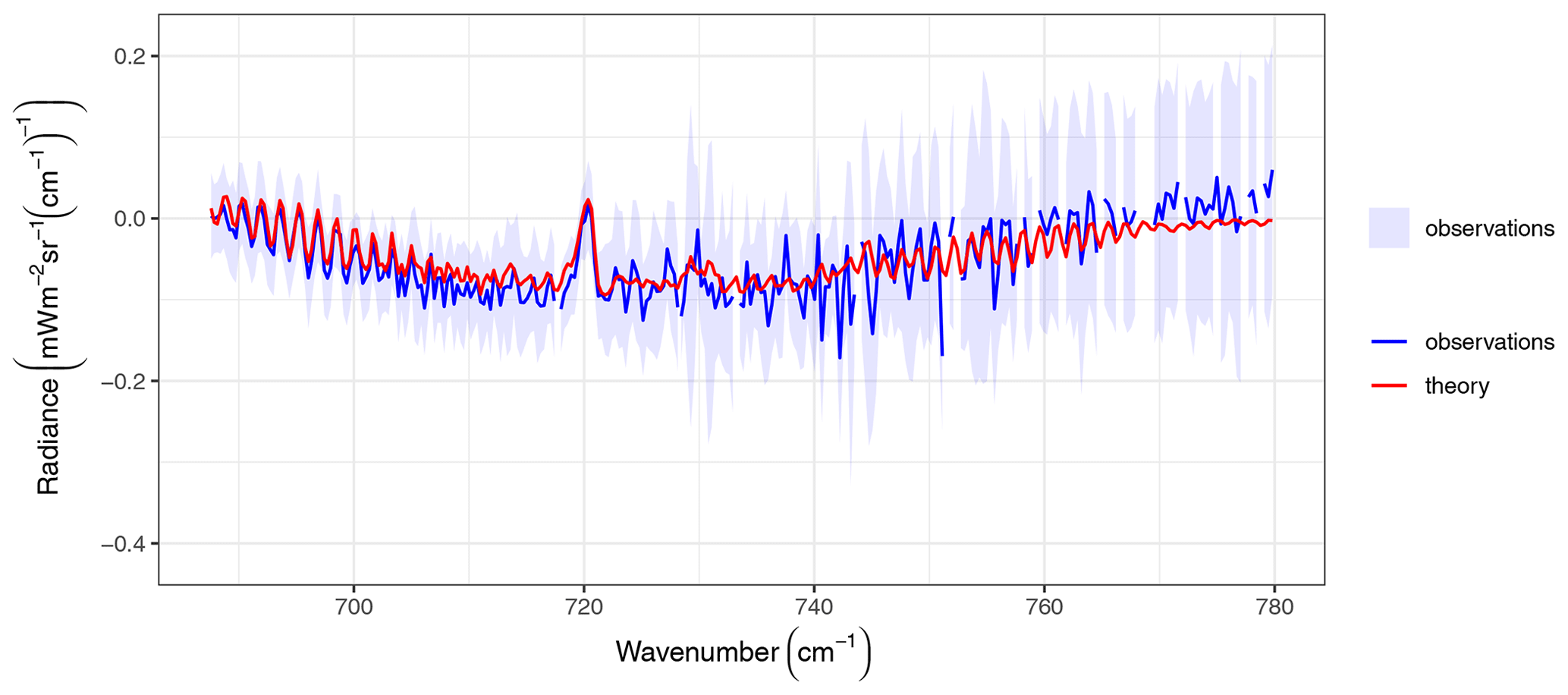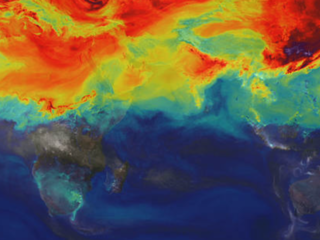News | April 3, 2009
The Turbulent Nature of Air - An Interview with Atmospheric Scientist Brian Kahn

While working on a way to improve the simulation of clouds in climate models, Brian Kahn and Joao Teixeira of NASA's Jet Propulsion Laboratory reveal Earth's atmosphere to be much more dynamic than was previously thought. In this interview, atmospheric scientist Brian Kahn talks about why we need to know a lot more about clouds, and what his research is revealing.
Why do we need better representations of clouds in climate models?
One of the biggest uncertainties in our ability to predict our future climate has to do with clouds, specifically cloud feedbacks and atmospheric processes related to clouds.
What do you mean by "cloud feedbacks"?
I'll start with an example. We've all stood outside with the sun shining down on us. When a cloud blocks the sun, it suddenly doesn't feel as warm. Clouds affect the radiation coming from the sun to the earth. They also affect the radiation reflected from Earth's surface out to space. There's always a natural balance that's struck, and that balance controls our temperature. That balance can affect how the atmosphere circulates, it can affect Earth's precipitation patterns, and wind patterns. There's a relationship between the temperature of the air and the types of clouds we have. Changes in temperature can cause changes in clouds, and this change in clouds can again affect the temperature and other atmospheric processes. That's what we mean by cloud feedbacks.
So getting back to the question of why we need to model clouds better. As the amount of carbon dioxide in the atmosphere increases, it causes the atmosphere to warm. This increase could cause us to have more clouds or less clouds. It could cause a change in cloud properties like the size of the water droplets in the clouds, or the heights of clouds. Some types of clouds could increase, and maybe some will decrease. All these things affect the climate in some way, we just don't know how. But before we can begin to know how clouds will affect climate, we have to know what kind of clouds and what kind of cloud properties we'll be encountering as the climate warms.
There are many climate models, and they disagree on the amount of warming we're going to have in the future. But they disagree even more on what will happen to Earth's precipitation patterns. Understanding what's happening with clouds will give us a better chance at reducing the uncertainty in our climate models. And this will increase the trustworthiness of the forecasts coming out of the models.
You guys developed the first global climatology of the variance, meaning you've been able to describe how much temperature and water vary across different distances over the entire Earth. How will this help us better understand how the climate is changing?
We're looking at how we can improve climate models by folding in more precise temperature and water vapor information. And more than that, the information we're adding is real measured data, not simulated data. To improve how clouds are represented in climate models we need to know how temperature and water vapor behave globally, because temperature and water vapor largely control cloud formation. It's crucial to know more detailed aspects of these quantities to better forecast future climate and weather.
You used satellite data for this research, specifically data from AIRS. What does AIRS data give you that you didn't have before?
AIRS gives us vertical profiling of the atmosphere, and it's delivered daily. In other words, AIRS is allowing us to see atmospheric temperature and water vapor from Earth's surface up to the stratosphere every day. We're getting global 3D snapshots of Earth's atmosphere, and it's reliable. And the AIRS data is higher resolution than we've had before. It's like analog TV versus HDTV. HDTV is a little closer to reality, and AIRS is giving us data with higher quality like that.
The AIRS data is giving us fundamental information about the turbulent nature of the atmosphere. And it's not a simulation. It's real. The AIRS data are measurements taken from the atmosphere itself. It's showing us a lot more of the diversity in the atmosphere, both vertically and horizontally. We're able to resolve the global diversity of the turbulent nature of temperature and water vapor in the atmosphere.
We've been able to look at this with aircraft data, but only in the small tracks made by the aircraft. AIRS data complements these measurements, but it can get data over the entire Earth and at the same time tell us about a lot of other things like cloud properties, dust and aerosols, and other trace gas concentrations such as carbon monoxide, carbon dioxide, ozone, and more. It can give us a more complete picture of the whole system.
Your research is documented in your paper, but how will it get used and who's going to use it?
At this time, we can compare our AIRS-derived results to the output generated by climate models. The comparison is a useful baseline test for the realism of future climate simulations. Large differences between models and observations typically indicate that either the model is deficient in its simulations or that the real observations may not be sampling all types of cloud or clear sky regimes in the atmosphere. Small differences give us more confidence not only in the model simulations but in the observational analyses, too.
This paper also gives us an observational benchmark of turbulence processes in the atmosphere. A more thorough understanding of the behavior of the atmosphere will also help us better design climate models to make better forecasts of future climate.
As far as who will use these research results, we believe that the climate modeling, theoretical and observational communities can make use of them. We have ongoing collaborations with scientists in our field who design and run climate models, who make observations, and who have developed conceptual models of atmospheric physics and dynamical processes.
What made you and Joao decide to try this approach?
I give a lot of credit to Joao for orienting my thinking towards these types of problems. I was in the process of pursuing another study, and Joao asked me if I had considered "trying Y, as opposed to X". I began to search the literature on this topic and saw how fundamental it was to atmospheric research and climate modeling. However, I found these sorts of studies were usually based on limited aircraft or satellite data, and they hadn't taken advantage of newer satellite data that gives you measurements of temperature and water vapor all along the column from Earth's surface to the stratosphere. And it was a fascinating problem - a fun problem. And it's necessary to know. I guess the lesson is that if you start asking the right questions about the right problems, there are plenty of new things left to discover.
What problems did you encounter?
To be honest it was sort of a simple problem. This was as straightforward a study as I have ever been a part of. The hardest parts of it were figuring out who did what in the past, where our work fits in to the larger climate picture, and interpreting our results. Sometimes the most straightforward studies can be the most interesting.
What's next?
In the short term, my goal is to repeat the research, but now combine the AIRS data with data from Cloudsat (Cloudsat is a NASA earth-orbiting instrument designed to measure cloud properties). I also want to work with other centers to do the comparison with other climate models. This should lead to a nice short paper. In the long term, the goal of course is to finally implement our findings into an actual climate model.
How would you feel if your research actually upgraded the big climate models?
Useful. (Smile....)
Brian Kahn was interviewed by Sharon Ray at the Jet Propulsion Laboratory.
Science Paper
The research referred to in this interview is found in the paper:
by Brian Kahn and Joao Teixeira
Citation:
Kahn, B. H., and J. Teixeira (2009), A global climatology of temperature and water vapor variance scaling from the Atmospheric Infrared Sounder, J. Climate, 22, 5558-5576, doi: 10.1175/2009JCLI2934.1.
Companion Story
[[IMAGE||/system/internal_resources/details/original/85_server_2.jpg||Left||56||TurbulentAirStory||||||85||http://airs.jpl.nasa.gov/story_archive/Turbulent_Nature_of_Air]]The Turbulent Nature of Air - Simulating Global Temperature and Water Vapor at Small Scales
Biographies
[[IMAGE||/system/internal_resources/details/original/81_people-975.jpg||Left||62||Brian Kahn||||||89||http://science.jpl.nasa.gov/people/BKahn/]]Brian Kahn
Atmospheric Scientist
JPL
[[IMAGE||/system/internal_resources/details/original/82_people-1447.jpg||Left||62||Joao Teixeira||||||92||http://science.jpl.nasa.gov/people/Teixeira/]]Joao Teixeira
Research Scientist, Atmosphere and Climate
JPL
Web Sites
AIRS, the Atmospheric Infrared Sounder
A spaceborne weather and climate instrument on board NASA's Aqua satellite
Cloudsat
A NASA earth-orbiting instrument designed to measure cloud properties






